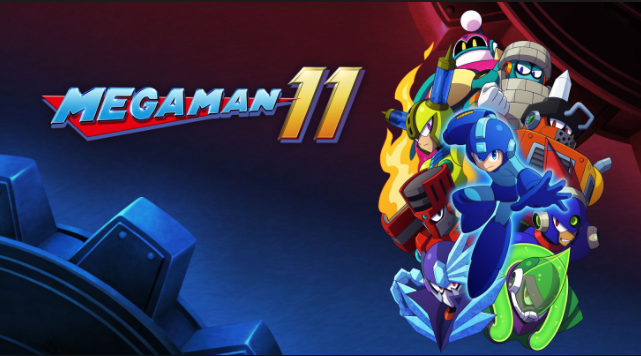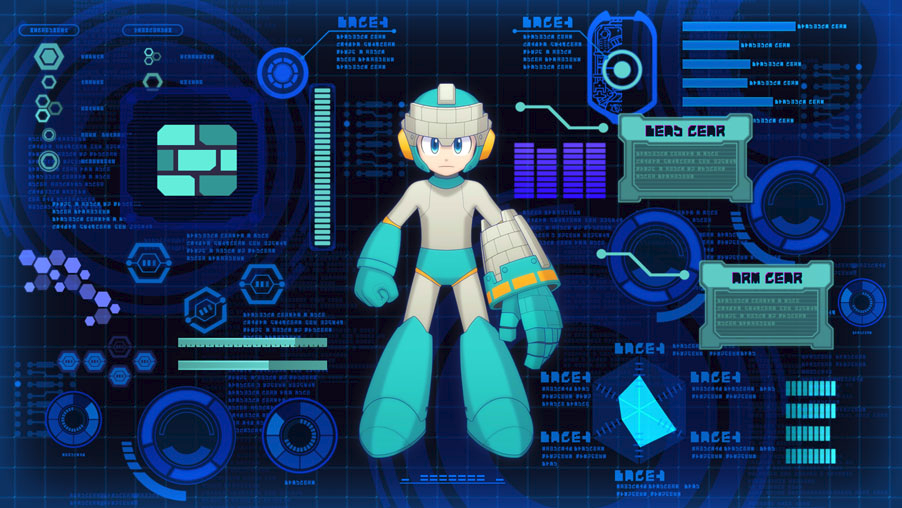My love for the original Mega Man series runs deep. It has simple yet challenging gameplay, awesome music, and surprisingly deep lore for a run and gun franchise.
The formula hasn’t changed since the first game launched on the NES in the ’80s, and the newest entry is no exception.
However, despite its familiarity, Mega Man 11 does take a few steps toward modernity. A new graphical style and the new Double Gear System adds some pizzazz to the design.
Unfortunately, it ultimately falls just short of really expanding upon what fans have already come to expect. You still fight eight commonly themed robot masters, take a trek through several stages in Dr. Wily’s castle, and then hang up your Megabuster. There’s really no march into uncharted territory, either with its story or otherwise.
A Mesh of Art Styles
The original Mega Man series hasn’t ventured from its 8-bit roots — save for the seventh and eighth installments, which brought Mega Man into the 16-bit and 32-bit eras respectively.
But Mega Man 11 offers an entirely new aesthetic for the Blue Bomber — a 2.5D look. The crisp HD graphics coupled with a smooth frame rate makes this one of the best looking games in the series, that’s for sure.
With that said, the art-style does vary from stage to stage.
For example, Block Man’s stage offers a beautiful Aztec-style backdrop with golden temples and old crumbling ruins crawling off into the distance, while Acid Man’s stage is a sprawling chemical lab full of spewing pipes and scientific mystery.
However, Bounce Man’s stage, for example, is mostly devoid of anything particularly interesting. It’s like an amusement park minus the amusement. It just doesn’t have the same pop.
Thankfully, it’s only one of a small handful of stages that aren’t up to snuff.
As for Mega Man’s visual upgrade, the changes are subtle yet noticeable for any fan of the series.
The most notable tweak is when Mega Man acquires a new power from a boss. Instead of simply swapping color palettes like in previous titles, Mega Man now changes his costume to better reflect the boss he just beat.
It could rub some fans the wrong way, but ultimately, it’s a nice change of pace, adding more variety to Mega Man’s look.
Familiar Gameplay with Some Tweaks
Gameplay mostly remains the same.
In classic sidescrolling platformer fashion, you’ll run from left to right navigating pitfalls and traps until you reach the boss at the end of the stage. Avoiding pesky enemies and shooting them into oblivion is key, and unlike the Mega Man X series, there are no secret paths or hidden upgrade capsules to find, keeping the action front and center.
However, there are a few quality of life improvements from previous games.
Mega Man’s dog buddy, Rush, returns with his famous Rush Coil and Rush Jet features, which allow you to spring high in the air and travel over pits and enemies. But instead of having to switch between them in the game’s pause menu, they are both mapped to single buttons for easy deployment.
Switching between different powers Mega Man acquires has also received an upgrade. You can now use the right analog stick to open a rotary menu for quick switching between powers.
Double Down on Double Gear
The biggest addition in this entry is the Double Gear System, which alters your speed, power, or both with the press of a button. It adds an extra layer of strategy to boss encounters and how you navigate certain areas; knowing when to use it is critical for getting you through some of the game’s tougher spots.
For example, when you run into enemies too fast to keep up with, it’s best to use the Speed Gear, which slows down enemy movement and allows you to pummel them with a barrage of shots. The Power Gear is best used to take down baddies by giving you rapid firepower and a boosted charge shot.
While using these skills, a meter will slowly start to fill up and when it reaches its max capacity, your power will fizzle out and require a cool-down. However, if you pay attention to the gauge above your head while using the Double Gear System, you can disengage the power, allowing it to recharge faster than if you had maxed it out. Doing this also allows you to reactivate it while it’s recharging.
This new mechanic doesn’t change gameplay too drastically, save for putting a strategic element on boss fights. But if utilized creatively, it can help you blast through areas of a stage with ease if you are someone who enjoys speed-running through games.
Double Gear Isn’t Just for Mega Man
The eight new robot masters can also utilize the Double Gear System during battles. Some of them will use the Power Gear to transform themselves into towering monstrosities, while others will take advantage of the Speed Gear and fly circles around you while they rain attacks from above.
As with every other Mega Man game to date, defeating bosses grants you special powers that give you advantages over other bosses. So, as always, figuring out the right order in which to defeat each boss will make the game much less frustrating.
And as usual, the powers obtained from each robot master are a mixed bag, ranging from dull to exciting. There’s the Acid Barrier, which basically puts a shield around you and lets you spit acid pellets; then there’s the Tundra Storm which will wipe out any enemies nearby with a giant icy tornado.
Each of these powers can be enhanced by the Power Gear, allowing them to mete out massive damage but at the cost of a ton of weapon energy — so it’s best to use the Power Gear sparingly with special powers.
A Mega Man for Every Skill Level
Mega Man 11 also caters to newcomers and longtime fans alike by adding different difficulty options, ranging from “Newcomer” to “Expert Mode”.
“Newcomer” will grant you near invincibility, letting you freely enjoy the game and not get bogged down by the more challenging modes.
If the main game feels too short, there are also several challenge modes that can keep you busy. These include Time Attack, Boss Rush, and Dr. Light’s Trial, which involves navigating through 30 enemy-filled areas with one bar of life. Finally, if you’re the competitive type, there are also leaderboards to put your skills to the test against players around the world.

In With the Old, Out With the New
Ultimately, Mega Man 11 may cater a bit too much to classic 8-bit fans, and while there’s nothing wrong with going completely old school, the game does take away a few additions that Mega Man 7 and Mega Man 8 brought to the table.
There’s no intro stage, no mid-game stage that takes place after defeating four of the eight robot masters, and Mega Man and Rush’s rivals, Bass and Treble, are missing. It would’ve been great to see the return of those two as they’re some of the franchise’s most liked characters.
Did I mention Proto Man doesn’t even make an appearance? It’s like Capcom completely forgot that all of these characters exist.
Mega Man 11 is a decent, if not game-changing addition to the series. Although it takes some bits away, it balances itself out by including a few fun changes in gameplay.
It may not be revolutionary by modern standards, but it doesn’t have to be. Mega Man is time and time again a simple and fun, pick up and play series — and Mega Man 11 paves the way for future entries.
Let’s just hope that Proto Man, Bass, and Treble make their way back in Mega Man 12.










Published: Oct 14, 2018 10:54 am